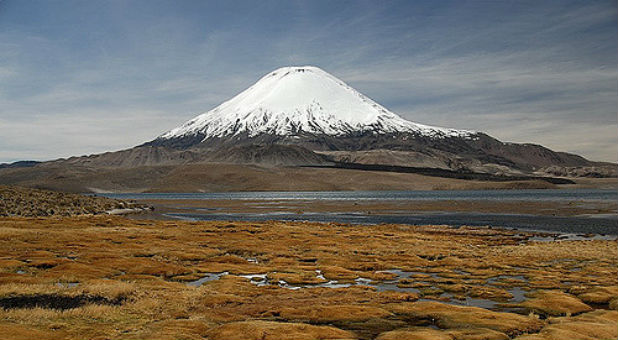How To Get Prepared For The Coming Earthquakes And Volcanic Eruptions
All over the world seismic activity is increasing.
In recent weeks we have seen a dramatic earthquake in Ecuador, more than 600 earthquakes have experts extremely alarmed about what is happening to Japan’s southern Island, and 37 volcanoes around the planet are erupting right now. Most of the large earthquakes and volcanic eruptions that we have witnessed lately have come along the Ring of Fire, which is an area of seismic instability which roughly encircles the Pacific Ocean.
Fortunately the west coast of the United States has been spared so far, but scientists tell us that tension has been building up along the San Andreas fault and the Cascadia Subduction Zone for decades, and they assure us that it is only a matter of time before we see a major event. When that day arrives, will you be prepared?
There were a couple of notable seismic events which took place on Monday. First of all, the largest volcano in Russia’s Far East known as Klyuchevskaya Sopka violently erupted. Steaming hot ash was shot more than three miles up into the air, but fortunately it is not a heavily populated area. This represents yet another major volcanic eruption along the Ring of Fire, and this has some scientists extremely concerned about what may be coming next.
Here in the United States, an unusual swarm of 21 earthquakes along the Arizona-Nevada border is also raising eyebrows:
More small earthquakes shook northwest Arizona Sunday adding to the list of temblors that have struck the area since March 29.
The Arizona Geological Survey said two quakes occurred, including a magnitude 2.6 quake at 12:07 a.m.
There has been a swarm of 21 quakes in an area along the Arizona-Nevada line south-southwest of Littlefield, AZ, which is also close to southwestern Utah and the frequency and span puzzles geologists.
The good news is that we have not had a truly historic earthquake in the U.S. for decades, and there have been no major volcanic eruptions since Mount St. Helens exploded back in 1980.
But scientists assure us that we are living on borrowed time, and there are three extremely dangerous volcanoes in North America that I am keeping a close watch on right now:
1. Mt. Popocatepetl
Popocatepetl is an Aztec word that can be translated as “smoking mountain,” and more than 25 million people live within range of this extraordinarily dangerous mountain. Experts tell us that during the time of the Aztecs, entire cities were completely buried in super-heated mud from this volcano. In fact, the super-heated mud was so deep that it buried entire pyramids. In the event of a full-blown eruption, Mexico City’s 18 million residents probably wouldn’t be buried in super-heated mud, but it would still be absolutely devastating for Mexico’s largest city.
2. Mt. Rainier
Mt. Rainier has been dubbed a “time bomb,” “the most dangerous mountain in the United States” and “one of the most dangerous volcanoes in the world” because it sits so close to Seattle, Tacoma and other major cities along the coast of Washington state. In the event of a full-blown eruption, countless numbers of people would literally be buried alive in a tsunami of super-heated mud. These tsunamis of super-heated mud are known as “lahars,” and scientists believe that Mt. Rainier is capable of producing lahars that could move at speeds of up to 50 miles per hour. I am so convinced that an eruption of Mt. Rainier is in our future that I even put one in my novel.
3. The Yellowstone Supervolcano
Many of us that are a bit older still remember the eruption of Mount St. Helens in 1980. Well, scientists tell us that a full-blown eruption of the Yellowstone supervolcano would have up to 2,000 times the power of that eruption. Salt Lake City would be toast, anything caught outside in Denver would probably be dead in pretty short order, and a layer of volcanic ash at least 10 feet deep would be dumped on everything even up to 1,000 miles away. Food production in America would be virtually wiped out, and a “volcanic winter” would cool global temperatures by up to 20 degrees for an extended period of time.
In other words, life as we know it would come to an end.
That is why the extremely unusual activity going on at Yellowstone right now is such a concern. If it decides to blow, world history will make a dramatic turn in a single moment.
So what should we do?
Preparing for a volcanic eruption requires a strategy that is a little bit different. Here are more tips from the CDC.
If you are told to evacuate
Follow authorities’ instructions if they tell you to leave the area. Though it may seem safe to stay at home and wait out an eruption, doing so could be very dangerous. Volcanoes spew hot, dangerous gases, ash, lava, and rock that are powerfully destructive.














































